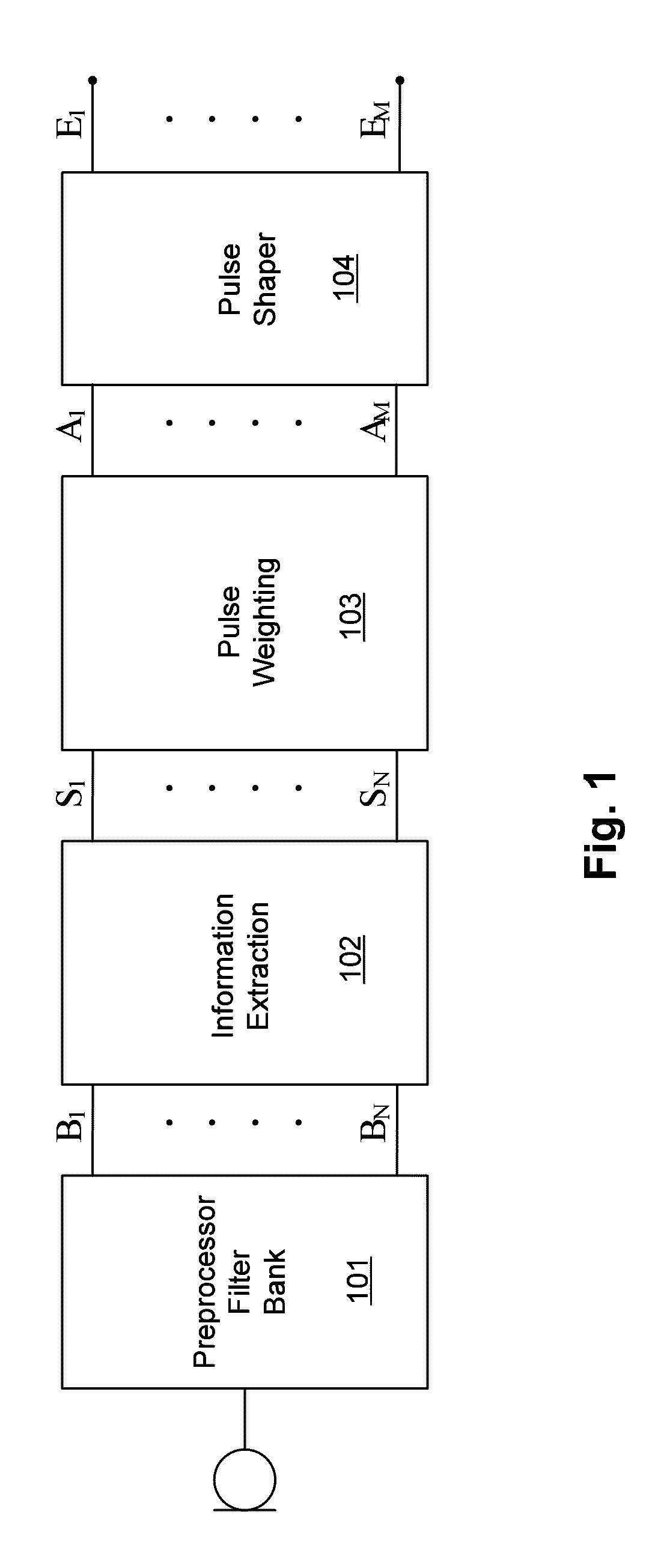High Accuracy Tonotopic And Periodic Coding With Enhanced Harmonic Resolution
a harmonic resolution and harmonic resolution technology, applied in the field of implantable medical devices, can solve the problems of unresolved higher harmonics, unresolved unexpected and unwanted changes in pitch percept, and relatively complex timing of low-to-mid frequency channels
- Summary
- Abstract
- Description
- Claims
- Application Information
AI Technical Summary
Benefits of technology
Problems solved by technology
Method used
Image
Examples
Embodiment Construction
[0026]Embodiments of the present invention are directed to generating electrode stimulation signals for an implanted electrode array for a cochlear implant system which preserves temporal and spectral characteristics of the original audio input signal. A high accuracy technique codes tonotopic and periodic pitch information with enhanced harmonic resolution. This provides enhanced temporal coding of dominant signal components such as formants and low frequency harmonics.
[0027]FIG. 1 shows various functional signal processing blocks according to one specific embodiment of the present invention wherein N band pass signals containing stimulation timing and amplitude information are assigned to M stimulation electrodes. Preprocessor Filter Bank 101 pre-processes an initial acoustic audio signal, e.g., automatic gain control, noise reduction, etc. Each band pass filter in the Preprocessor Filter Bank 101 is associated with a specific band of audio frequencies so that the acoustic audio s...
PUM
 Login to View More
Login to View More Abstract
Description
Claims
Application Information
 Login to View More
Login to View More - R&D
- Intellectual Property
- Life Sciences
- Materials
- Tech Scout
- Unparalleled Data Quality
- Higher Quality Content
- 60% Fewer Hallucinations
Browse by: Latest US Patents, China's latest patents, Technical Efficacy Thesaurus, Application Domain, Technology Topic, Popular Technical Reports.
© 2025 PatSnap. All rights reserved.Legal|Privacy policy|Modern Slavery Act Transparency Statement|Sitemap|About US| Contact US: help@patsnap.com



